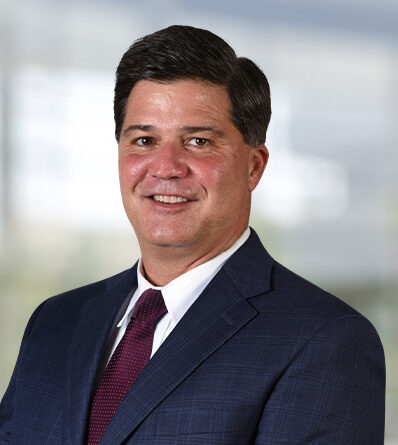Finding IP Value
Patent Invalidated Due To “Impossibility” In The Claims

Words matter. A recent case decided by the Federal Circuit Court of Appeals, Synchronoss Technologies, Inc. v. DropBox, Inc., again highlights how true this statement is in the context of patent claims.[1]
In Synchronoss, the Court of Appeals affirmed the invalidation of every claim in Synchronoss’ patent 7,587,446 titled “Acquisition And Synchronization Of Digital Media To A Personal Information Space” (September 8, 2009)(hereafter, “the ‘446 patent”) by the District Court. The patent solved a problem of limited bandwidth when transferring digital files over a computer network. When the patent was applied for in 2000, such transfers were difficult and time-consuming to perform due to file size. The solution, described and claimed in the ‘446 patent, was to transfer only part of a file instead of the entire file, with the transferred part being called “difference information.” Each item of difference information – generally, an update of a larger version of a media file stored in a user’s personal storage – required less system bandwidth to transfer than entire files would.
In 2016, Synchronoss sued DropBox, Inc. for alleged infringement of the ‘446 patent, among others. Unfortunately for the patent owner, however, the court found the terminology in the patent claims related to difference information to be “nonsensical.” Claims in the patent called for two different versions of a file. One was “a first version of the media data,” and the claims said that media data must contain “a directory of media files.” The other was called a “second version of the media data” – to contain “an update not included in the first version.” The update was the difference information.
The problem with the claims stemmed from requiring the second version to be in “a same format as the first version.” As previously noted, the first version of the media data had to contain a directory of media files. In regards to the second version, because it had to be in the “same format as the first version,” the words of the claims meant that the second version also had to contain a directory of media files. But the second version was merely an update to a file – not a directory of media files. Thus, DropBox successfully emphasized the contradiction existing in the claims, between a directory of media files related to the first version, versus a second version that was essentially an updated file. For example, a directory resides on system hardware, while a file update as claimed (difference information) would exist in software and would not contain a directory. Given the contradiction, the court characterized the claims as “an impossibility” and “nonsensical.”[2]
The patent owner’s inability to reconcile the conflicting terminology in the claims was insurmountable, leading to invalidation of the patent due to indefiniteness. But how the contradiction came to exist is also instructive. It took almost 9 years after the patent application was initially filed for the United States Patent and Trademark Office (USPTO) to grant the patent. During that time, the applicant amended the claims 7 different times, seeking to differentiate the claimed invention from prior art. On the final time, the USPTO examiner and the applicant met to discuss the claims in what is known as an interview. Following this interview, a Notice of (Patent) Allowance contained an examiner amendment, by agreement of the applicant, which required “media data” to include a directory of digital media files. This might have been fine had it been limited to the first version of the media data. But as part of the same amendment, the second version (the update) also had to be “in a same format as the first version,” i.e., which, because of the other amendment, now required a directory of digital media files.
For the patent owner, this contradiction turned out to be a defect from day 1 of the patent’s existence. This defect undid any success reached after 9 years of prosecution at the USPTO with regard to the ‘446 patent, and it ended three years of litigation over this patent against DropBox. During testimony, Synchronoss’ own expert conceded that a digital media file cannot be a directory of media files, stating that different wording probably should have been used in the claims. Likewise, Synchronoss’ company representative admitted that having “media data” meant a directory of media files would not make sense in the context of the claims. DropBox prevailed in the case in large part based on these fundamental concessions. Synchronoss did attempt to have the courts, in effect, rewrite the claims so they would make sense technically. However, as the Court of Appeals observed, “it is not our function to rewrite claims to preserve their validity.”[3]
Absent a successful petition for rehearing or an appeal to the Supreme Court, neither of which is likely, the opinion of the Court of Appeals represents a win for DropBox and a termination of patent rights contained in the ‘446 patent. The practical observation arising from the case involves attention to all words found in patent claims. It is important for inventors and patent counsel to review the claims carefully at every step of the prosecution process, to check that words mean what they are intended to mean and are free of contradictions. In the patent at hand, “an impossibility” due to a change in claim language on the final lap of prosecution prevented any chance of success for the patent owner.
This post is part of a series with two other posts involving similar cases. The series culminated in a short “practical lessons” post, which can be accessed here.
[1] 987 F.3d 1358, 2021 WL 520047 (Fed. Cir. February 12, 2021)(Case Nos. 2019-2196, 2019-2199, on appeal from U.S. District Court for the N.D. of California, Case No. 4:16-cv-00119-HSG).
[2] Synchronoss Technologies, 2021 WL 520047 at *1366-1367.
[3] Synchronoss Technologies, 2021 WL 520047 at *1367 (citations omitted).
